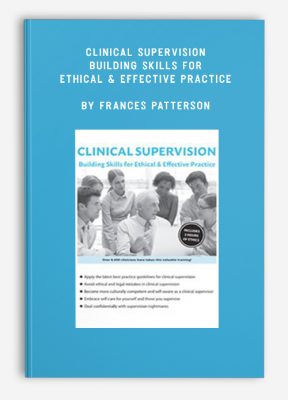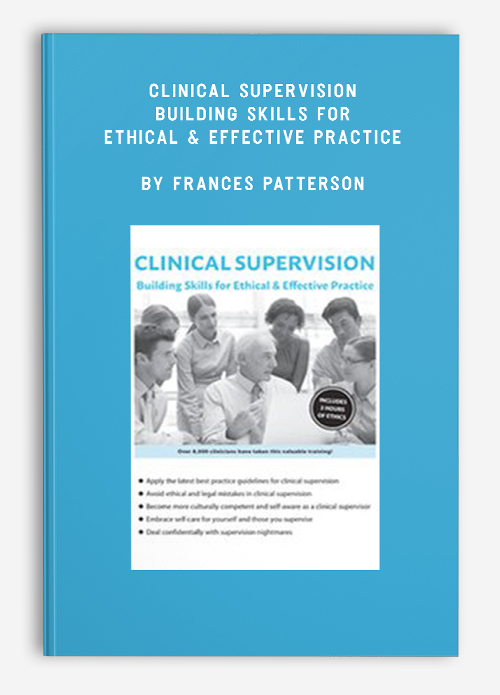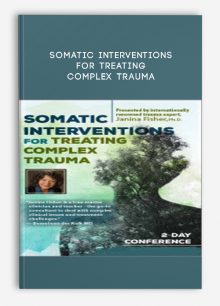Clinical Supervision: Building Skills for Ethical & Effective Practice by Frances Patterson
$219.99 $62.00

Clinical Supervision: Building Skills for Ethical & Effective Practice by Frances Patterson
**More information:
Get Clinical Supervision: Building Skills for Ethical & Effective Practice at Salaedu.com
Description
Clinical supervisors carry a great responsibility and obligation to be ethical, professional role models, yet many supervisors do not receive sufficient specific training to prepare them for their critical role. Many supervisors are promoted due to their excellent clinical skills rather than because of their training as a supervisor, thus perpetuating the mistakes of their supervisors. Supervisors are responsible, ethically and legally, for the work and development of the supervisees, as well as patient/client care. Supervision is a balancing act between the needs of both.
Promotion into supervision can no longer be based solely on clinical skills. The clinician, regardless of level of education, credentials, field, populations served, or work experience, must develop a separate set of skills and knowledge base to become a competent and effective supervisor who can handle a myriad of ethical, clinical and supervisee situations.
Dr. Patterson will help you build or enhance your supervision skills, critical judgment, and relationship building skills. She will also assist you in developing a supervision model and contracting with supervisees. Take away supervision tools to implement immediately and to more effectively do your job and become comfortable in your role as a clinical supervisor.
BIGGEST CHALLENGES IN SUPERVISION
- Open discussion
- Possible challenges
- Dealing with taboo topics
- Addressing timeliness in paperwork or promptness to work
- Talking about behavior problems or incompetency
TYPES OF SUPERVISION
- Being a supervisor
- Levels of supervision
- Supervision vs. consultation
- Other reasons for supervision
- Clinical vs. administrative supervision
- Managing multiple roles
- When not supported by management
PROTECTING ALL INVOLVED
- Ethical and legal issues in supervision
- Legal principles
- Liability, and how to protect yourself
- Risk management strategies
BEST PRACTICES AND PRINCIPLES
- What is your supervision like?
- Guidelines
- Conducting supervision
- The relationship
- Ethical considerations
- Evaluation
- The supervisor
MODELING ETHICAL SUPERVISION
- Modeling healthy behaviors
- Obligations and responsibilities
- Major ethical issues for supervisors
- Competency
- Accountability
- Self-care
- Supervision is not therapy
INS AND OUTS OF THE SUPERVISION PROCESS
- Beginning supervision
- Contracting with supervisees
- Informed consent for supervisees
- Developing goals and objectives
- Evaluation
- Types of evaluation
- Evaluating the supervisor
CONFIDENTIALITY IN SUPERVISION
- What is/is not confidential in the supervision relationship
- Communication and confidentiality
- Confidential documentation
- Supervision notes
- Other documentation considerations
CHOOSING AND DEVELOPING A MODEL OF SUPERVISION
- Various models of supervision
- Choosing your model
- 9 descriptive dimensions
- Considerations of what fits for you
SUPERVISION STRATEGIES
- Formats
- Individual
- Group
- Advantage and disadvantages
- A supervisor’s challenge
- Live supervision
- Case consultation
- Web-based supervision
- Remaining HIPAA compliant
- Methods
- Interpersonal recall
- Group supervision dynamics
MANAGING THE SUPERVISION RELATIONSHIP
- Safe environment
- Modeling ethical behavior
- Understanding power and authority
- Dual relationships
DIFFICULT SITUATIONS AND SUPERVISION NIGHTMARES
- Discussion of case examples
- Supervisee impairment
- Documentation problems
- Addressing attire
- Peer to supervisor
- Transference/countertransference
- Values and beliefs of supervisor
- Client suicide
- Dealing with resistance
- Addressing unethical behavior
More information about Medical:
Medicine is the science and practice of establishing the diagnosis, prognosis, treatment, and prevention of disease.
Medicine encompasses a variety of health care practices evolved to maintain and restore health by the prevention and treatment of illness.
Contemporary medicine applies biomedical sciences, biomedical research, genetics, and medical technology to diagnose, treat, and prevent injury and disease,
typically through pharmaceuticals or surgery, but also through therapies as diverse as psychotherapy, external splints and traction, medical devices, biologics, and ionizing radiation, amongst others.
Medicine has been around for thousands of years, during most of which it was an art (an area of skill and knowledge) frequently having connections to the religious and
philosophical beliefs of local culture. For example, a medicine man would apply herbs and say prayers for healing, or an ancient philosopher and physician would apply bloodletting according to the theories of humorism.
In recent centuries, since the advent of modern science, most medicine has become a combination of art and science (both basic and applied, under the umbrella of medical science).
While stitching technique for sutures is an art learned through practice, the knowledge of what happens at the cellular and molecular level in the tissues being stitched arises through science.
1 review for Clinical Supervision: Building Skills for Ethical & Effective Practice by Frances Patterson
Add a review Cancel reply
Related products
HEALTH - FITNESS - LIFESTYLE - MEDICAL
HEALTH - FITNESS - LIFESTYLE - MEDICAL
HEALTH - FITNESS - LIFESTYLE - MEDICAL
Complete Certified Professional Coach Online Course from Berry Fowler
HEALTH - FITNESS - LIFESTYLE - MEDICAL
HEALTH - FITNESS - LIFESTYLE - MEDICAL
HEALTH - FITNESS - LIFESTYLE - MEDICAL
HEALTH - FITNESS - LIFESTYLE - MEDICAL
HEALTH - FITNESS - LIFESTYLE - MEDICAL
Somatic Interventions for Treating Complex Trauma with Janina Fisher, Ph.D. from Janina Fisher










Trevis Trevis –
Welcome to Sala Shop, we are here to provide everything to learn and improve this life…encourage you to check clearly the course